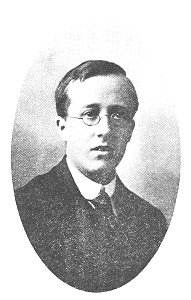

This, however, would be the end of his large scale fame. Along with The Planets, another of his most popular works was The Hymn of Jesus, which was first performed in 1920. This inspired his legendary The Planets suite, which he began working on circa 1916. After a failure of one of his performances in 1912, Holst took a vacation to Spain out of depression in which he realized his love for astronomy.

Several of these were also inspired by Hindu writings in the Rig Veda, and showed Holst's love for Hinduism. Works he composed during and after this time were Choral Hymns from the Rig Veda, Somerset Rhapsody, Beni Mora, Savitri, Vedic Hymns, and The Cloud Messenger. Paul's Girl's School and Morley College for Working Men and Women. However, most publishers refused his pieces until he was offered a teaching position at James Allen School. Shortly after these were written, Holst vowed to give up trombone in order to concentrate more on composition. Some of Holst's works he wrote shortly after college were Sita, based on a Hindu epic poem Cotswold Symphony, written in memory of William Morris Ave Maria, his first piece to every be published and Indra, a symphonic poem about a Hindu god. Right after college, Holst married a girl he had met through one of his choirs named Isobel. He left college in 1895 when he was offered a first chair trombone position at the Carl Rosa Opera Company. Holst met Ralph Vaughn-Williams while in school, and they became very good friends, often sharing compositions before they were finished. Another work he wrote during school was called the Winter Idyll. His first opera was written while he was in college, entitled The Revoke. He also helped pay for school by playing trombone. Despite this, however, Holst kept studious and won a scholarship for composition to his own school, which was a big relief at the time because his father was running out of funding at home. He was also suffering depression which would stay with him through the rest of his life.
Gustav holst compositions full#
In the meantime, he was still weakening because he had chosen vegetarianism and was not getting the full amount of nutrition that he should be getting. Soon after going to college, Holst realized that he couldn't continue playing piano because of the neuritis in his right hand, so he switched to trombone. Holst's composition professor was Charles Stanford, who taught him to criticize his own work. It turned out to be quite successful with critics, and impressed his father so much that he would send Holst to the Royal College of Music on borrowed money. Holst's first major composition, called Lansdown Castle, was written and performed when he was only eighteen. His first job, being hired as an organist for a choral society called Bourton on the Water, helped him fully understand choral music and sparked his love for choir that would continue later in life. Years later, he attempted to compose music, but could not make it into any of the colleges he wanted on scholarships. He also played the violin, but he abhorred doing so. Since his father was a piano teacher, Holst played piano from a very young age. Holst was very weak as a child: he had asthma, vision problems, and neuritis in his hands and this made for a very troubled childhood. He is of Swedish, Spanish, and Irish descent. Gustav Holst was born on Septemin Cheltenham, England.


 0 kommentar(er)
0 kommentar(er)
